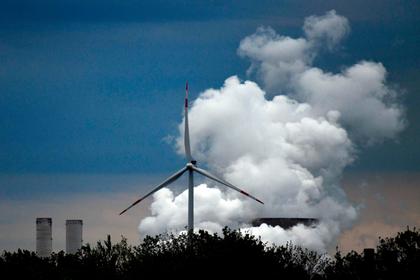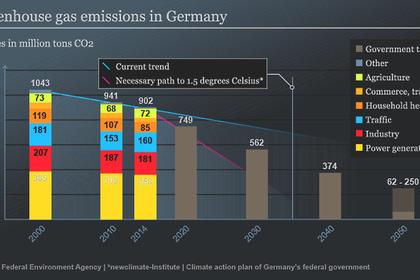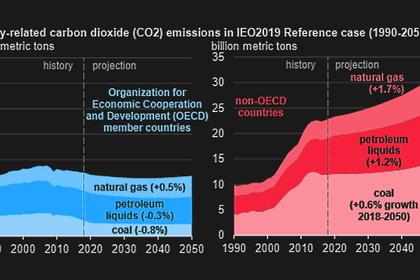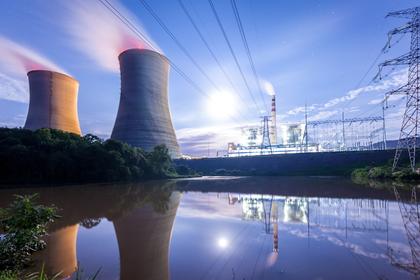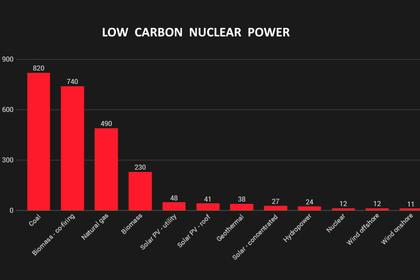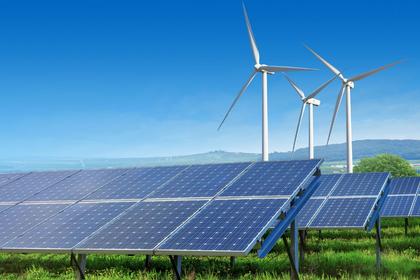
DECARBONIZATION FOR CLIMATE
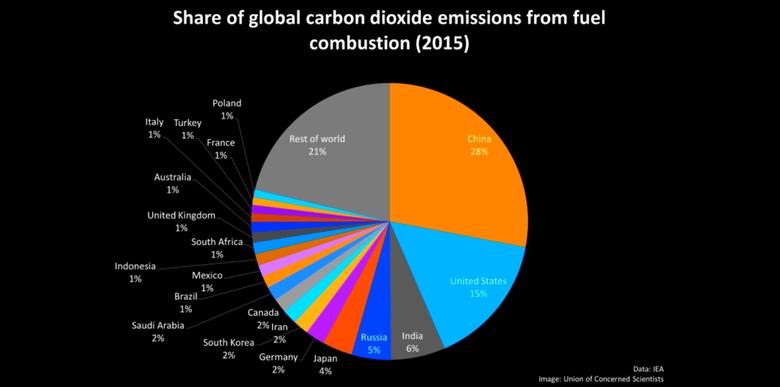
By Wil Burns Professor & Co-Director, Institute for Carbon Removal Law & Policy American University
ENERGYCENTRAL - Sep 4, 2020 - In 2019, Representative Alexandria Ocasio-Cortez (D-NY) introduced H.R. 109 in the U.S. House of Representatives "recognizing the duty of the Federal Government to create a Green New Deal." This resolution was simultaneously introduced in the Senate by Senator Ed Markey (D-MA), as S. Res. 59. The focal point of the resolutions is effectuation of the temperature targets of the Paris Agreement through achievement of net-zero greenhouse emissions by 2050. The resolutions also seek to promote job creation, pursuit of justice and equity in the energy transition, and achievement of other environmental objectives, including clean air, clean water, and sustainability. While the legislation was introduced in the form of non-binding resolutions, it’s contemplated that they could form the basis for binding legislation in the future, especially if Democrats capture the Presidency and Senate in November. Thus, it is important to scrutinize whether the proposals set forth in the GND are “fit for purpose” in confronting the specter of unchecked climate change.
In recent years, it has become increasingly obvious that achieving the goal of net emissions neutrality by 2050, and the long-term temperature objectives of Paris, will likely require both aggressive efforts to reduce greenhouse gas emissions, as well as large-scale deployment of so-called carbon dioxide removal (CDR) approaches that could facilitate moving beyond net emissions neutrality to achievement of so-called “negative emissions. CDR processes achieve this by removing carbon dioxide from the atmosphere and locking it away through sequestration or utilization. Indeed, 87% of the 204 scenarios in the Intergovernmental Panel on Climate Change’s Fifth Assessment Report that hold project temperature increases to below 2°C by 2100 contemplate large-scale deployment of carbon dioxide removal options. Global climate models project that the globe may need removal of between 700-1000 GtCO2 between 2011-2100 to stabilize temperatures at either 1.5C or 2.0C above pre-industrial levels.
However, while many analysts believe that deployment of CDR approaches at this scale will require developing a portfolio of several different options, the Green New Deal bill merely makes a glancing nod at CDR approaches, and a narrow one at that, only referencing “low-tech solutions that increase soil carbon storage, such as land preservation and afforestation” in its ten-year “Green New Deal Mobilization” strategy section. This, incidentally, is the same approach embraced by Senator Bernie Sanders in his version of the Green New Deal.
Unfortunately, this narrow focus is highly unlikely to effectuate massive removal of carbon dioxide from the atmosphere over the course of this century. For example, let’s examine the prospects for afforestation/reforestation programs to sequester tens of billions of tons of carbon dioxide. Many of the recent estimates of high sequestration potential from planting trees are premised on a study by Bastin, et al., which concluded that a large-scale afforestation initiative could sequester a quarter of the current atmospheric carbon pool. However, critics of this study, and similar findings, have leveled a number of criticisms of its methodology, as well as expressing concerns about the implications of afforestation at this scale. For example, most of these studies fail to account for carbon storage in current ecosystems in potential tree planting regions, resulting in overestimation of potential carbon sequestration by 85% or more. Moreover, to reduce potential conflicts with other potential land uses, Bastin, et al. assumes that as many as 25% of the trees would be planted in ice-covered regions. However, this would substantially reduce surface albedo (proportion of solar radiation reflected by surfaces) increasing the absorption of heat, which could offset all of the cooling benefits associated with afforestation in these regions.
Large-scale afforestation/reforestation programs could also pose substantial environmental and social justice and risks. As much as 50% of assumed sequestration in some studies comes from planting trees in savannahs and grassland areas. However, ecological restoration of savannas and grasslands rarely involves planting trees. Indeed, it often requires tree-cutting and prescribed fire to promote biodiversity and ecosystem services. Thus, tree planting could undermine these interests, with biodiversity losses of particular concerns in grassland ecosystems. Tree-planting programs also often occur on agricultural lands, which can result in agricultural production being displaced to native forest areas, resulting in deforestation and potential losses of biodiversity. Many studies conclude that the actual potential of sustainable forest carbon storage initiatives globally would be no more than 1-2 GtCO2 annually. The World Resources Institute recently estimated that an extremely ambitious domestic tree planting program (60 billion trees by 2040) in the United States could remove about 540 million tons of carbon dioxide from atmosphere annually. This translates into approximately 10% of yearly emissions in the United States. While this could certainly constitute an important component of a carbon dioxide removal program in America, it clearly cannot be the only one.
Many also fear that seeking to afforest/reforest an area potentially equivalent to half the area of Africa or more would result in massive land-grabs from vulnerable populations. There is empirical evidence of land grabs from indigenous peoples and other vulnerable groups in the Reducing Emissions from Deforestation and Degradation (REDD) program, which seeks to provide compensation for programs to preserve forests. As a consequence, many people in developing countries have lost their livelihoods, with benefits flowing largely to elites in such countries. HR109 seeks to “promote justice and equity by stopping current, preventing future, and repairing historic oppression” of so-called “frontline and vulnerable communities” in the United States. However, given the limited potential for afforestation in the U.S., it is likely that we will also look for afforestation opportunities in other countries. This might have the perverse impact of simply “exporting” injustice to other countries, absent very careful monitoring systems.
Finally, there are serious questions associated with the permanence of carbon sequestration associated with afforestation/reforestation programs. Studies indicate that afforestation/reforestation programs often fail within a few years because planted trees are not maintained, or land is re-cleared. An effective monitoring regime can substantially increase the cost of such projects to the point where they are no longer viable. Moreover, climate change itself threatens carbon storage by increasing the risks of fires, and the proliferation of pests and disease.
HR109 also refers to potential initiatives to enhance soil carbon sequestration. Some of options frequently cited in this context include no-till or low-till agriculture, additions of crop residues to soils, and biochar.
However, the jury remains out in terms of the viability and judiciousness of these approaches. Some studies have concluded that reducing or eliminating crop tillage could remove substantial amounts of carbon dioxide from atmosphere. However, other research finds that while more carbon might be stored in the upper 30 centimeters of soils, it would not lead to more carbon storage in the entire soil profile. Moreover, no/low till approaches might necessitate the application of substantially more herbicides and pesticides, which could pose serious environmental and health risks, including for vulnerable farm workers.
Cover crops, such as crop residues, can promote soil aggregation, improving the ability of soils to store carbon. However, it’s far from clear that this would result in substantial additional sequestration of carbon. Biochar is produced by burning organic material in an environment with little or no oxygen. It is highly resistant to decomposition in comparison to plant matter, potentially providing for long-term sequestration of substantial amounts of carbon. Globally, large-scale biochar deployment might sequester somewhere between 0.3-2GtCO2, so again, it can only be one element of a cohesive carbon dioxide removal strategy. Moreover, while some studies have shown that biochar might substantially reduce methane and nitrous oxide emissions also, others have indicated that it would increase emissions of these potent greenhouse gases, necessitating the need for additional research.
Overall, it is clear that while there is a compelling case for carbon dioxide removal as part of any national plan to address climate change, the drafters of the Green New Deal’s vision is too narrow. I would suggest that the bill be amended to provide for a national research and development program for an array of other CDR options, with an eye to creating a portfolio of responses to meet the objectives of the Paris Agreement. These should include the following approaches:
- Bioenergy with Carbon Capture and Sequestration (BECCS). BECCS seeks to reduce concentrations of carbon dioxide (CO2) in the atmosphere in a process by which biomass is converted to heat, electricity, or liquid or gas fuels, coupled with CO2 capture and sequestration (CCS), whereby CO2 is stored terrestrially or in the ocean, or utilized. While, some studies have concluded that BECCS could sequester upwards of 9-10 GtCO2 annually by the middle of the century, this would require massive diversion of agricultural lands, which could sharply increase food prices for the world’s most vulnerable populations, as well as require huge amounts of water and fertilizers. However, it may be possible to sequester somewhere between 0.5-5 GtCO2 sustainably, warranting further research.
- Direct Air Capture (DAC). DAC technologies pass ambient air through an air contractor, where it is bound through the use of chemical or liquid sorbents, with subsequent separation and concentration of carbon dioxide so that it is suitable for potential utilization or storage. Recent research indicates that DAC could contribute substantially to meeting the U.S.’s long-term climate goals. However, the Rhodium Group has identified a number of imposing barriers to large-scale implementation, including cost, and inadequate market opportunities and policy incentives, while other research has raised concerns about energy and water demands. GND legislation should include adequate research funding to facilitate more granular assessment of the potential and risks of DAC, as well as incentives for deployment, e.g. through the use of government procurement processes, to drive costs down.
- Enhanced Mineral Weathering (EMW). The uptake of carbon dioxide through the weathering of silicate minerals is the primary regulator of atmospheric concentrations on geological time scales. Enhanced mineral weathering (EMW) seeks to scale up this uptake by the use of finely ground silicate rocks, such as basalt. However, while some studies indicate that EMW could draw down atmospheric concentrations to 350-390ppm by 2100, others emphasize the need for substantial additional research across a range of soil and crop types, climates and spatial scales. Moreover, there are concerns about the environmental impacts of mining, grinding and spreading of rocks, cost, and energy demand. GND funding could help us to engage in an assessment process in a much more focused fashion than is currently occurring.
- Ocean-Based CDR Approaches. Several marine carbon dioxide removal options are currently being explored. These include: a. artificial upwelling, which would seek to stimulate primary production in marine environments by drawing nutrient-rich water from beneath the photic zone to the surface; b. artificial downwelling, which contemplates increasing the rate of CO2 transfer to deep ocean regions by enhancing the transport of carbon-rich cold water into the deep ocean; c. ocean alkalinization enhancement, whereby lime or silicate materials would be distributed on ocean surfaces to increase total alkalinity. This would, in turn, result in chemical transformation of CO2, and long-term storage in the ocean in the form of bicarbonate and carbonate ions; d. Blue carbon, which refers to carbon capture by phytoplankton, as well as marine coastal macrophytes, including mangroves, salt marshes, seagrass and seaweed assemblages. Many researchers believe that there is substantial potential to expand kelp forests, seaweed beds and mangroves, including in deeper waters. However, because there has been very little research of most of these approaches, and serious potential environmental risks associated with many of them, a revised GND might be an ideal platform to launch a comprehensive marine-based CDR research program.
If any future incarnation of the Green New Deal is truly to be a “deal” from the perspective of effectively addressing climate change, it should embrace a robust research agenda for an array of carbon dioxide removal options. Moreover, it should seek to develop incentives for deployment of CDR options that prove promising.
-----
This thought leadership article was originally shared with Energy Central's Energy Collective Group. The communities are a place where professionals in the power industry can share, learn and connect in a collaborative environment. Join the Energy Collective Group today and learn from others who work in the industry.
-----
Earlier:
